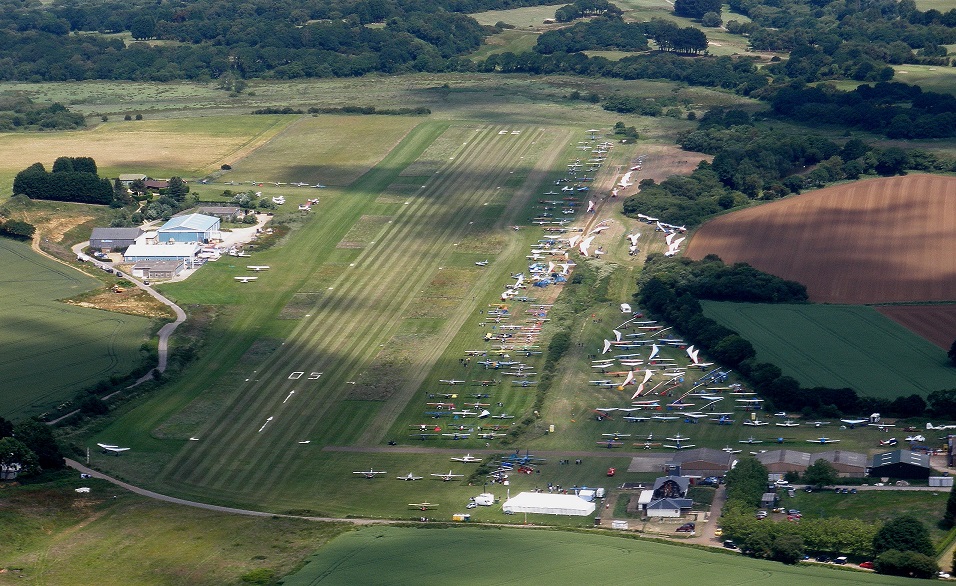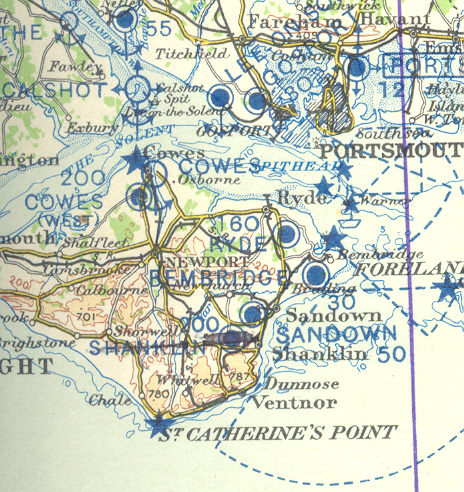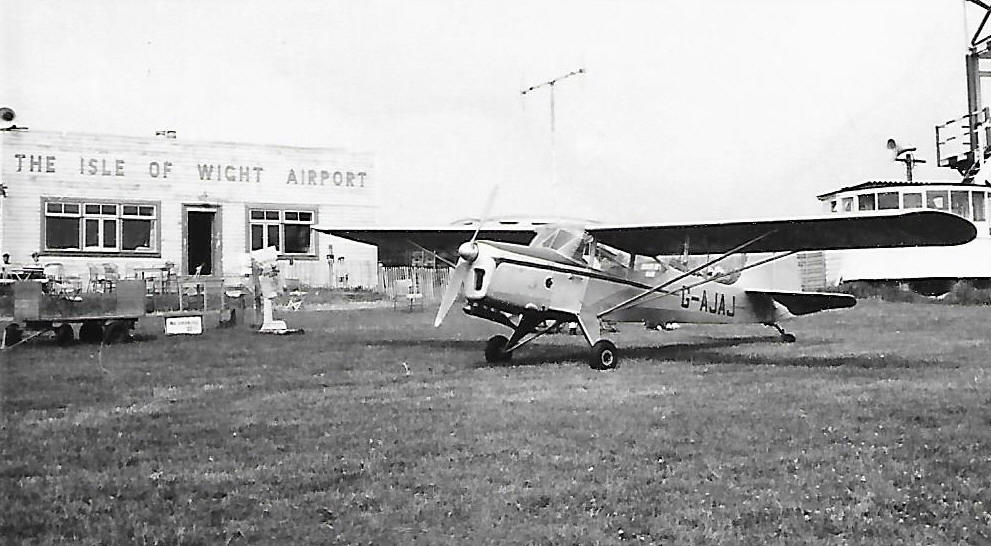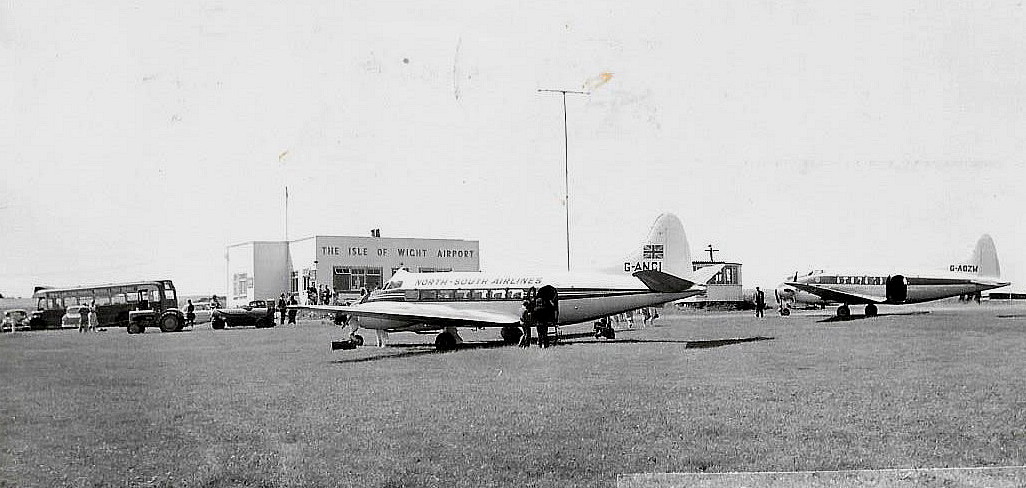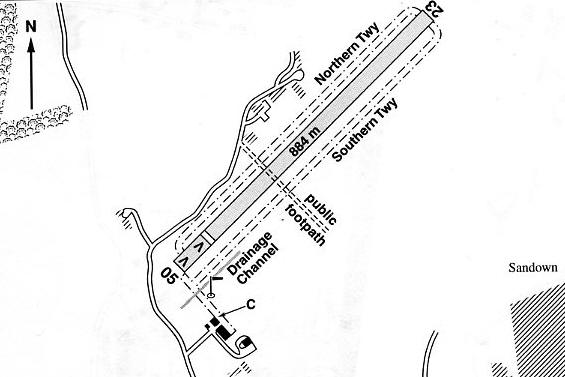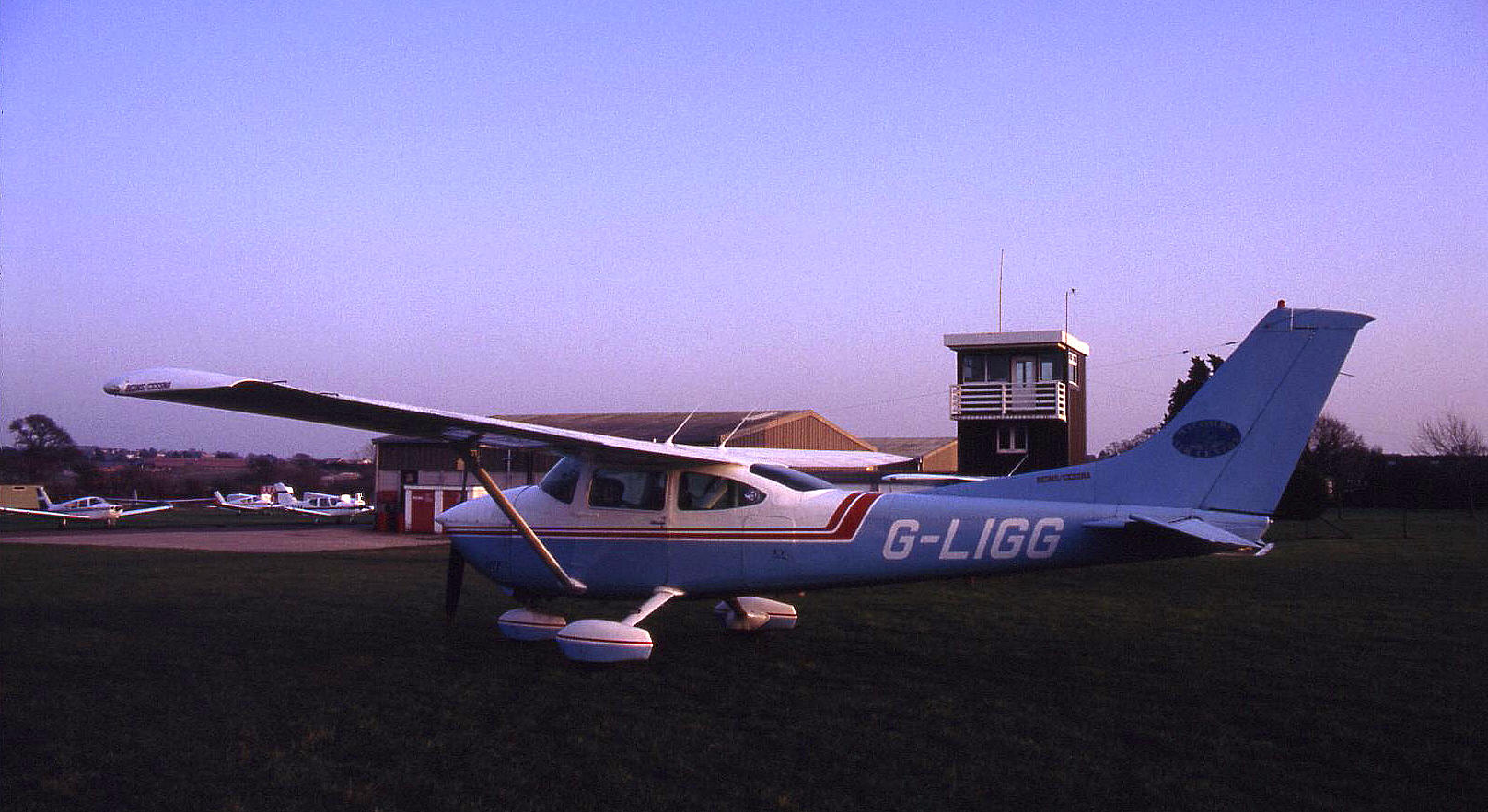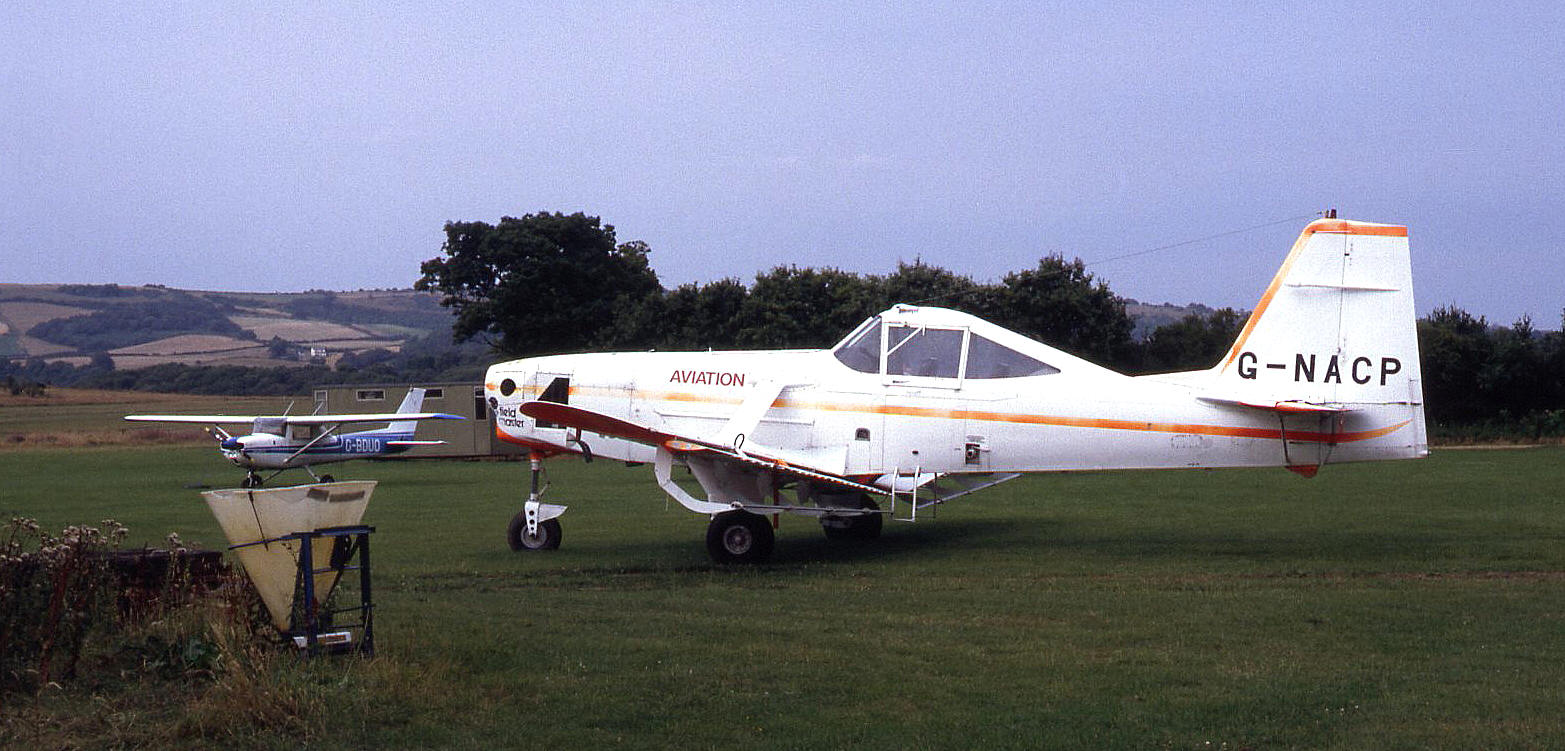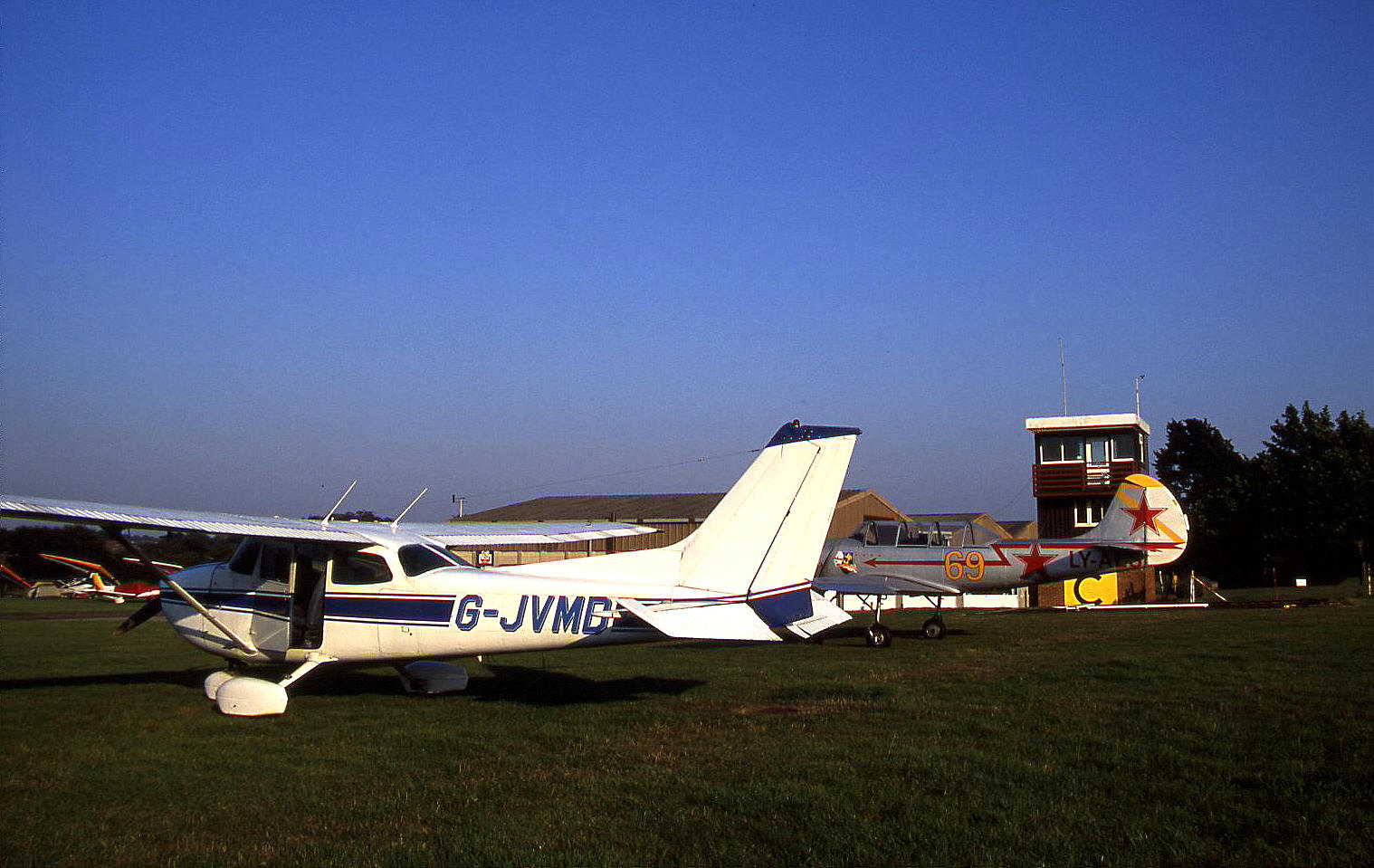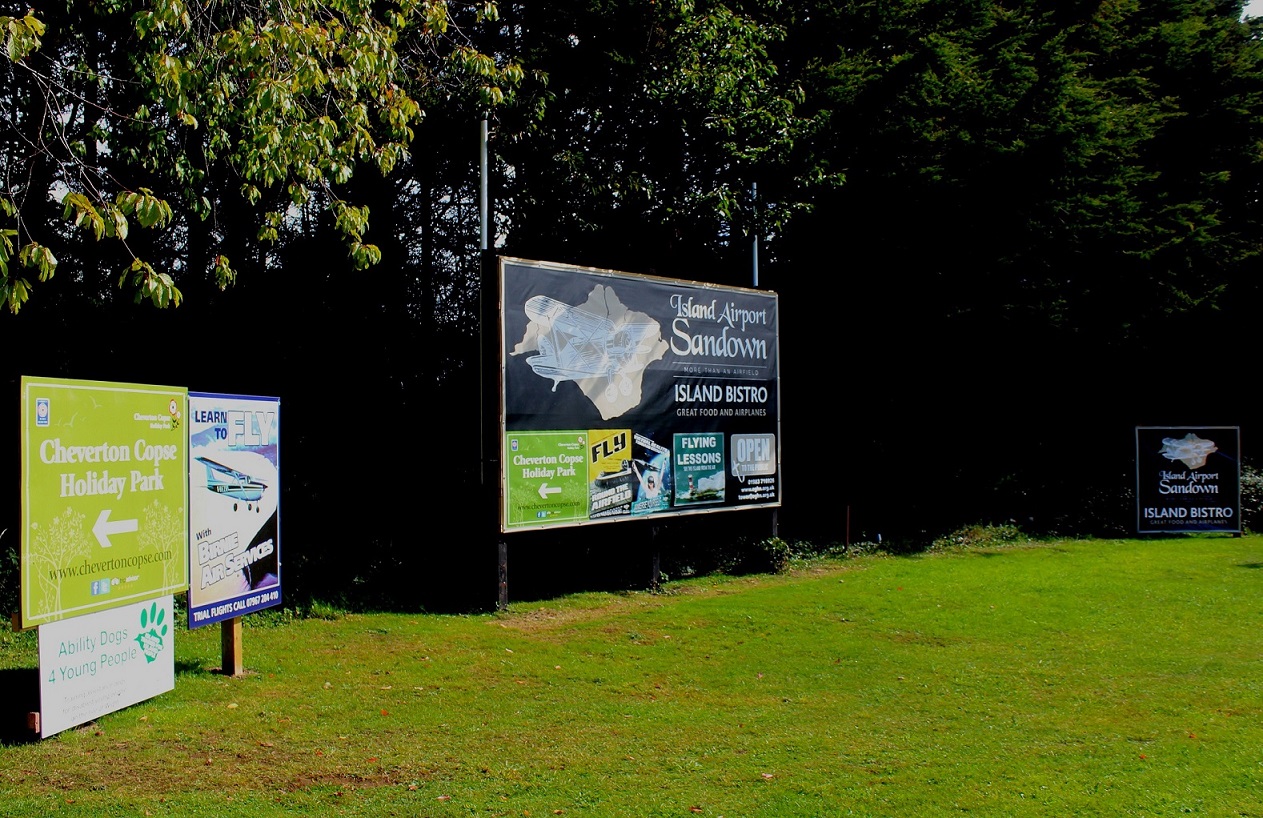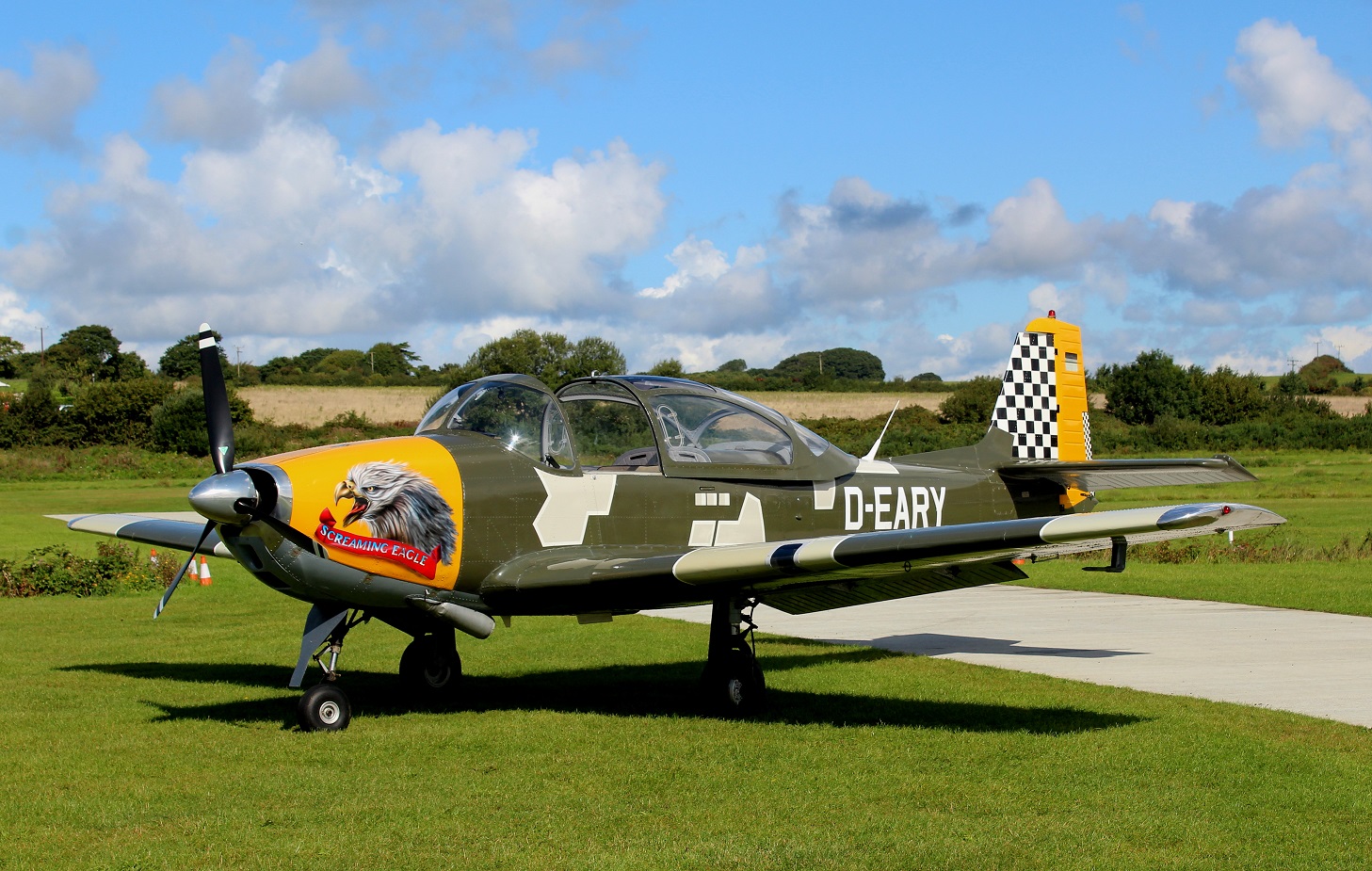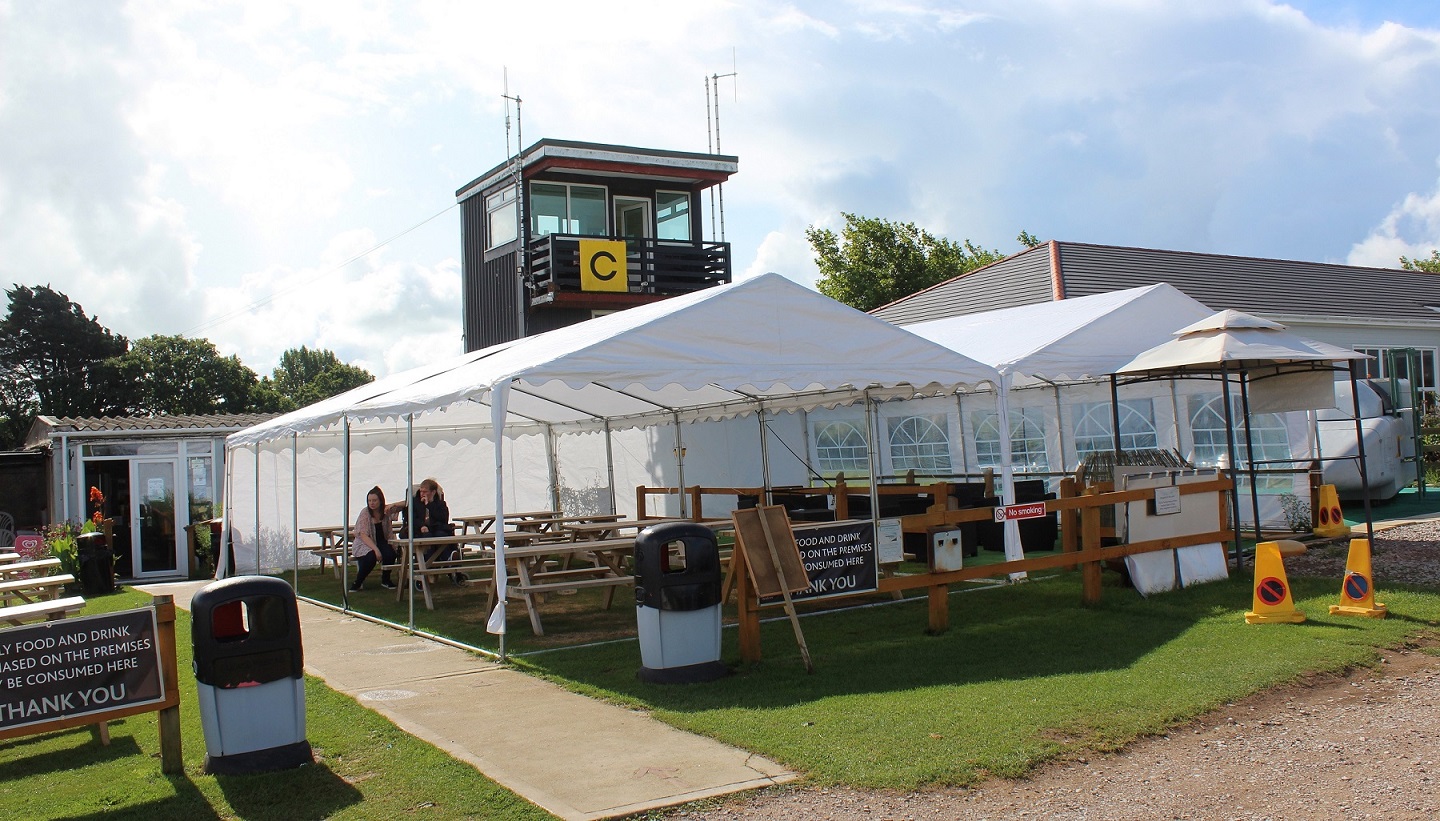Sandown
SANDOWN see also LEA
SANDOWN: Civil regional airport now aerodrome (Aka as APSE which was another site - see APSE MANOR for a seperate listing. And, from the 1930s at least, SANDOWN [LEA] AIRPORT)
Note: Now known as the ISLE of WIGHT AIRPORT
Note: The second picture of the 'Spamfield Fly- in' was provided by Brian Hope, the editor of Light Aviation magazine. The third picture (2018) was obtained from Google Earth ©
Operated by:
1965: Bees Flight Ltd
1980s(?) to - : Isle of Wight Airport Ltd
Activities: Airline, pleasure flights, GA private, business, training, gliding and microlight
Airline/charter users: Air Enterprises, Air Safaris, Airviews, Bees Flight, BKS?, Bournair, British Midland Airways, Derby Airways, East Anglian Flying Services, Isle of Wight Flying Club, Lees-Hill Aviation, North-South Airlines
Note: In the 1957 edition of The Aeroplane directory, Bees Flight Ltd were operating three Miles Geminis, one DH89A Dragon Rapide and two Austers.
Regarding the Isle of Wight Flying Club, their fleet is listed as comprising: One DH89A Dragon Rapide, three Miles Geminis, one DH82A Tiger Moth and two Austers. So clearly it would seem, the main emphasis of this concern was charter, sight-seeing and similar commercial activities.
Note: These four lovely pictures from postcards were kindly sent by Mike Charlton who has an amazing collection. See, www.aviationpostcard,co.uk
Of interest I suppose, despite the name on the building, the first picture is captioned - "Sandown Airport".
First picture: The DH83 Fox Moth G-ACEA was registered to Sandown-Shanklin Flying Service (LEA Airport) on the 30th March 1933 and served with them until the 26th August 1939. It then went to The Isle of Wight Flying Club, (I suspect it was 'off-loaded'), from the 20th September 1939 until the 23rd April 1940. It was then impressed as AW124.
Second picture: Apparently registered on the 4th February 1947 as an Auster J/1 Autocrat, G-AJAJ then seems to have been modified to J/1N Alpha standard. This aeroplane has a truly amazing history with countless owners and appears to still be flying today (2018). Amongst these owners on the Isle of Wight, were firstly Mr Rupert Ross Goding of Cowes, who owned 'AJ from the 28th May 1947 until the 14th January 1948. The Isle of Wight Flying Club, (address LEA AIRPORT near Sandown), then operated 'AJ from the 9th October 1950 until the 13th of December 1952.
However, I suspect this picture was probably taken when 'AJ was operated by Bees Flight, from the 12th February 1953 until the 6th May 1974. During which time they changed their operating base from SANDOWN to SOUTHAMPTON AIRPORT.
Fourth picture: Isn't amazing what a picture can reveal. For example the DH114 Heron 1B, (with a fixed undercarriage), was first registered as G-5-13 on the 6th June 1955, so a very early Heron prototype. It was registered to Dragon Airways as G-ANCI based at WOOLSINGTON (later NEWCASTLE airport) from the 6th June 1956 until the 26th March 1957.
It then went to Overseas Air Transport based in Jersey from the 2nd April 1957 until the 31st March 1962, so presumably 'North-South Airlines' was one of their trading names? In 1966 it went to Israel as 4X-ARL.
The DH104 Dove 1B also has an interesting and conflicting history. First registered to East Anglian Flying Services at SOUTHEND from the 7th March 1957 until the 17th August 1961. It was then registered to Mr Brian L R Pocock of Old Bisham, Sussex, from the 18th August 1961 until the 20th of July 1964. One source claims it was WFU (Withdrawn From Use) at BIGGIN HILL on the 21st February 1966.
However, the British Register shows it going to Air Bush Operations, at their base in Benghazi, Libya, from the 26th July 1965 until the 27th April 1970! So, pick the bones out of that.
Flying club/schools: Birnie Air Services Flying Training, Isle of Wight Flying Club, Isle of Wight Air Centre and Flying Club, Specialist Flying School
Note: In the 1957 The Aeroplane directory, the Isle of Wight Air Centre and Flying Club were listed as operating one Auster J/1 Autocrat and one Auster J/5 Autocar. What is most unusual in those days, and even today for that matter, is that the operation was being run by two women. The manager was Miss M. Wilkins and the instructor Miss B. McCulloch.
1959 ‘snapshot’: A.P.T. Flying Club, Isle of Wight Air Centre and Flying Club
Gliding: Since the 1950s and still listed as operating in 1990
Note: In the 1957 The Aeroplane directory, the Isle of Wight Gliding Club were listed as operating: One Slingsby T.21B dual trainer, two Kirby Cadets and one Grunau Baby 2. The latter being made in Germany in the 1930s.
Manufacturing: 1990: ARV Aviation
Pleasure flights: Bees Flight
Location: 1nm W of Sandown
Period of operation: Late 1940s (?) but closed down in the late 1960s. Reopened in (?) to present day
These maps are reproduced with the kind permission of Pooleys Flight Equipment. Copyright Robert Pooley 2014:
Runway(s):
1965: N/S 762x91 grass NE/SW 1216x91 grass
1990/2000: 05/23 884x40 grass
NOTES: When starting this Guide I had assumed that LEA airport and the present day SANDOWN were obviously exactly the same place but this now doesn’t appear to be the case. A map of LEA from 1937 shows an airfield with a shape quite different from SANDOWN today. However, the problem with a 1930s airfield like LEA which was basically formally a field or three, is that by its very nature the layout can easily be changed. And, it appears that LEA closed in 1939 before SANDOWN opened in the late 1940s, so the LEA site presumably reverted to agriculture. This said I would be surprised if the two sites don’t overlap. This happened elsewhere, see MONA on ANGELSEY for just one example which springs to mind.
AIRLINE OPERATIONS
During the summer season of 1956 BKS ran a service from WOOLSINGTON (NEWCASTLE AIRPORT) via YEADON (LEEDS-BRADFORD) and Bournemouth (HURN) to the Isle of Wight using DC-3s and Airspeed Consuls. SANDOWN would appear the obvious choice of destination in those days? It is certainly closer to major seaside resorts on the Isle of Wight.. Or perhaps they used BEMBRIDGE or one of the other 1930s airports?
THE VAC (VINTAGE AIRCRAFT CLUB)
The very first VAC fly-in, (then the VAG – Vintage Aircraft Group), was arranged here in September 1964. To quite a large extent it was the foresight of Roy Mills (then the unpaid secretary of the Popular Flying Association), who persevered with the idea of preserving the heritage of British light aircraft, by keeping them flying, as early as 1962. In the May 2014 edition of Light Aviation magazine John Beeswax gives an account of the VAC’s history as it celebrates its 50th anniversary.
To quote from the article: “As early as 1962, Roy had been campaigning in the aviation press, trying to draw people’s attention to the fact that old aircraft were being unceremoniously scrapped by airfield owners because of unpaid hangarage dues. He stressed that our British aviation heritage was being threatened because at that time, the general public’s popular acclaim was reserved for the aviation industries new and fast modern aircraft. The celebrated annual Farnborough Air Shows were the epitome of advanced British aircraft design and the highly-skilled test pilots were household names, familiar to millions of aviation enthusiasts.”
I think Mr Beeswax is over-egging the cake here, saying there were “millions of aviation enthusiasts”. Then, just as today, air-shows are very popular events, but, the majority of spectators cannot differentiate between a Lancair and Lancaster. They go for the spectacle, and, let us admit it, many hopeful of the prospect of a spectacular fatal crash. Human nature hasn’t changed. What was different in those days, was that for the first time, test pilots were major celebrities. Heroic pilots attracting press and media attention was something that had emerged since fixed wing aircraft arrived on the scene some sixty years earlier and very often they also attracted huge crowds just to see one pilot conducting a display of flying an aeroplane..
But, let us not forget, in the 19th century in the UK a single balloon launch (and there were a great deal of them) could often attract crowds of such numbers the organisers of many air-shows today can only dream of.
A FEW MORE NOTES
Regarding SANDOWN I was pleasantly surprised to learn from reading The Triple Alliance by Neville Doyle that he says: “Although it was closed down during the war and was disused for a period in the 1970s, it has since been revived and prospers under the present title of Isle of Wight Airport (Sandown).” Having flown into SANDOWN many times, mostly during the 1990s, it came as quite a surprise to learn that this aerodrome had closed in the 1970s. But I suppose that the regional airliners by that time were not suited to a relatively short grass runway? Plus of course the demand for an airline service to the Isle-of-Wight had greatly diminished.
PLEASURE FLIGHTS or JOY RIDES
Bees Flight used a Miles Gemini for pleasure flights in the late 1940s, I recall a Cessna 172 being used for pleasure flights when landing here in the late 1990s.
AN AIRLINE SERVICE?
In 1961 Air Safaris opened a service from ELMDON, using a DH.114 Heron G-AOZN chartered from North-South Airlines who had operated the service in 1960.
A LOW EBB
In 1976/7 SANDOWN appears to have been at a very low ebb in its history with just the Ord-Hume O-H7 Coupe G-ARIF appearing as resident, and possibly not airworthy? Today there is a small aviation museum on this now very busy airfield but it has seen quite uncertain times in recent years regarding its future. But, this said, it was announced in early 2013 that Sandown Airfield was in receivership. The Isle of Wight Flying Club had set up a charitable trust, The Isle of Wight Airport Trust. It really does seem such a shame as a low-level flight around the island with a stop at SANDOWN for a tea and a bacon sarnie is one of the most delightful flights you can do in a light aircraft in the south of England.
PICTURE GALLERY
Having flown into SANDOWN many times, to start with most of the pictures are mine. If you have pictures you would like to add, (max size 500kb), please forward these to me by e-mail.
Pictures really are wonderful reminders. For example I have no recollection of landing here in the Cessna 182 G-LIGG on the 22nd January 1992. But, my log book confirms taking off at 15.50 for Wycombe Air Park and the picture confirms that dusk was about fall. In those days probably feeling very confident we could scrape in just before official 'Night Time' which occurs after the sun has set beyond the horizon. Best tried on a clear weather day of course, which that day was.
Back in the 1990s I loved taking passengers for a tour of the Isle of Wight, and on a particular day in August 1990 undertook three flights from SANDOWN for a friend, (in the Cessna 172 G-WACW), to show the island to his friends and family starting from and ending at WYCOMBE AIR PARK. Ending up quite knackered, which gave me an appreciation of how most airline pilots must feel after a full days flying.
NOTE: The picture of the Cessna 172 G-JVMD at SANDOWN in August 2001 brings back some fond memories. I was commissioned by PILOT magazine to produce an article extolling the virtues of flying the south coast of England, from Dorset to Kent. See ROCHESTER (KENT) for a fuller account. It should have taken two days but we were fogbound at POPHAM for a day.
The reason for flying from SANDOWN to POPHAM for a night-stop was because a massive maritime event was taking place in the Solent, and it appeared that all the acommodation for many miles around was fully booked out.
ANOTHER PICTURE GALLERY IN 2017
Note: All pictures by the author. When the airfield was now known as 'Isle of Wight Airport'.
Note: On a visit at the end of August I was delighted to see D-EARY had visited. This aircraft designed by Piaggio in Italy as their P149D military trainer and communications type was selected by the German Air Force as a basic trainer and served with them from 1957 to 1990. It appears that Piaggio delivered 72 before Focke-Wulf built the remaining 190. I think this was a Focke-Wulf example - therefore a FWP-149D?
I have had a few flights as a passenger in this type, and it flies as if on rails. An old German friend had two, (one for spares), and he treated me to a most amazing low-level early morning flight in the Auvergne region in France many years ago. So seeing D-EARY here brought back many happy memories.
MORE NOTES
Having flown near to, and around the Isle of Wight several times, I think it is important to appreciate that this island encompasses all of the best features from Dover to Plymouth on the south coast of England, and therefore really is the best place to take a flight from to see these sights from the air.
keith grace
This comment was written on: 2021-04-19 21:16:23Does anyone know what was the cause of the fire which destroyed the fairly new restaurant and clubhouse adjacent to the tower? Such a great shame.
We'd love to hear from you, so please scroll down to leave a comment!
Leave a comment ...
Copyright (c) UK Airfield Guide















